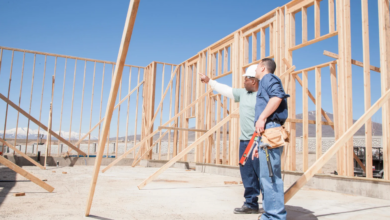The Role of Architects in Creating Disaster-Resilient Communities

In today’s unpredictable climate landscape, architects are no longer just creators of aesthetic spaces; they are essential to building communities that can withstand disasters. Their influence reaches beyond blueprints and building codes, embedding resilience into the core of modern infrastructure. Whether it’s hurricane-resistant structures or wildfire-safe housing clusters, the expertise of a bold architect in Atlanta can be the difference between vulnerability and durability.
Designing for Risk Reduction
Effective disaster-resilient architecture begins with risk-aware design. Architects must consider environmental stressors such as seismic activity, flood zones, wind exposure, and even rising temperatures. This foresight informs crucial design elements, elevated foundations, reinforced walls, impact-resistant materials, and spatial orientation that directly affect how structures perform during emergencies.
The strategy extends to how buildings interact with their surroundings. For example, homes situated in flood-prone regions benefit from elevated designs and proper drainage integration. Architects also utilize local climate data to guide material selection, ensuring durability and long-term safety.
In fast-growing cities, resilience is often challenged by density and outdated infrastructure. This is where the broader social impact of design becomes clear. Discussions around the importance of architecture in modern society emphasize how resilient buildings aren’t just reactive structures but proactive safeguards that protect lives and preserve communities.
See also: Why Scrap Pickup Is the Most Convenient Option for Home Renovations
Community Planning with Purpose
Resilient design isn’t limited to standalone structures, it scales across neighborhoods and entire urban districts. Architects play a pivotal role in shaping communities that can collectively withstand disasters. Strategic zoning, the integration of open spaces, and the placement of critical infrastructure all benefit from architectural foresight.
Parks may double as flood overflow basins. Emergency shelters can be pre-wired into public facilities. Transit corridors can be designed to facilitate evacuation instead of congestion. These are not ad hoc additions but intentional design moves architects make during early planning stages.
Moreover, executing these complex design visions requires a high level of coordination and execution. Many architectural teams adopt streamlined systems to manage scope, scale, and logistics efficiently. A closer look at how firms handle complex architectural projects reveals the importance of maintaining design intent while navigating budget limitations, evolving environmental codes, and client expectations.
From Blueprint to Execution
Disaster resilience must be built into a project from the beginning, not tacked on later. This is why architects often stay involved throughout construction, to monitor build quality, enforce compliance with resilience standards, and pivot if new threats emerge during development.
As climate events grow more extreme, there’s growing pressure for buildings to perform not just structurally but functionally under stress. Energy independence, ventilation, and access to clean water are all being woven into new design norms.
Architects who remain involved post-construction, reviewing system performance, recommending retrofits, or enhancing building lifespans, help communities stay one step ahead of future threats.
Conclusion
Architects have become central players in creating disaster-resilient communities. Their foresight, technical design strategies, and involvement in both planning and execution enable structures and entire neighborhoods to endure and recover from natural threats. As resilience becomes a defining principle in urban development, architects continue to shape safer futures, one design at a time.





